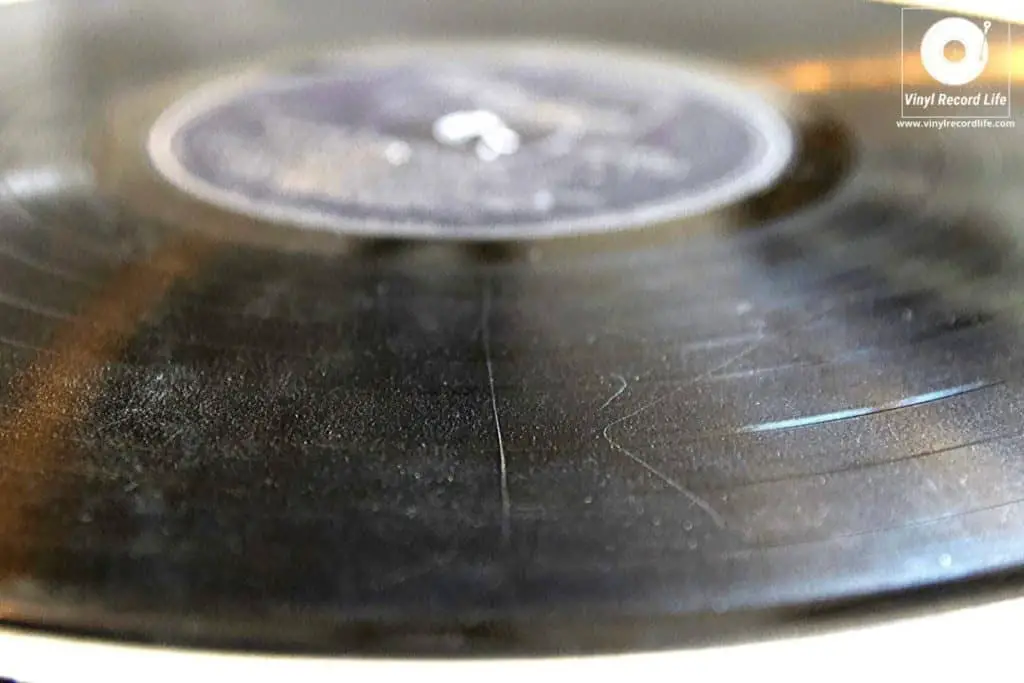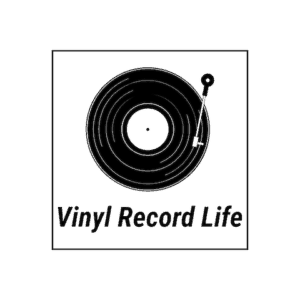
Every record collector’s worst nightmare is a damaged disc. It’s always been a real concern of mine, especially knowing that vinyl records are easily scratched and that once it has happened it’s impossible to fully repair.
Therefore, avoiding exposing your records to such a risk in the first place is essential. So how do vinyl records get scratched and how can it be avoided?
Vinyl records get scratched due to the following:
- Mishandling when being removed/replaced in sleeves.
- Incorrect storage, including stacking.
- Cueing up records and changing tracks without using the cueing lever.
- Being dropped or placed on surfaces.
- Dirt and dust in the grooves of the record.
There are many ways to avoid scratching a record, and all methods are simple and effective if followed carefully. Below, we’ll get to discussing some easy-to-implement steps you can take to ensure the preservation of your record collection through avoiding scratches.
The Main Causes of Scratches on Vinyl Records
There are many causes for the appearance of scratches on vinyl records, and they are often easily preventable if you develop and straightforward and methodical approach to how you treat your discs.
One of the main causes of scratches on records is mishandling, and this often takes the form of careless removal and replacement in record sleeves and covers. Records can pick up tiny surface scratches when they are slid in and out of their cardboard cover, and it’s really important to handle them with the proper care and attention.
The correct storage of your records is another key area to pay attention to, as incorrectly stored records often lead to scratched discs. One of the fundamentals of record collecting is that you don’t stack your records. Stacking records can warp and even crack them, but it can also lead to scratches as any surface dirt on the vinyl is easily turned into a point of friction which can lead to irreparable damage.
Placing records on surfaces is also a sure-fire way to scratch them, as they will attract all manner of dirt which will then act as an accelerant for scratches and scuffs.
Another cause of scratches and gouges on records is failing to use the cueing lever to raise and lower the tonearm on a turntable. A lot of people lift and place the needle onto a record directly using their hand, and this lack of steadiness and failure to delicately apply pressure to the surface of the record by using the lever can cause damage.
Once a Record is Scratched, It’s Scratched Forever
Once a record is scratched, that’s permanent. Understanding and differentiating between various kinds of scratches will help you to understand if the effect of the damage is bearable, or if it’s going to affect the sound quality of the record too much.
You can attempt to repair a scratched record, but it’s not possible to fully repair it.
How to Know if a Scratch on a Record is Serious or Not
The seriousness of a scratch can be measured by the impact it has on the sound quality of the record.
Deep scratches that can be felt by your finger are usually the kind that have permanently ruined the sound quality, and won’t be able to be rectified. They affect the integrity of the record and usually manifest themselves as a strong audible click on each revolution of the record.
Minor surface scratches, hairline scratches and scuffs, while also unable to be fixed, often cause much less of an impact when listening. With some care and attention in the form of a few cleans of the record, the audible impact of these much less grave scratches can be greatly reduced. These kinds of scratches are extremely common.
It is always advisable to exercise extreme caution when cleaning your records though, as there are plenty of DIY-style methods and cleaning solutions online which can cause further damage if not followed with great care.
Steps You Can Take to Avoid Scratching Your Vinyl Records
Having understood what the main causes of scratches to vinyl records are, that the damage is permanent and that there are different kinds of scratches that can result in varying levels of detriment to sound quality, it’s worth taking extra care to protect your record collection.
Here are some clear steps that you can take to ensure you minimize the risk of scratching your records.
1. Take great care when handling your vinyl records. Firstly, it’s important to remember to never touch the surface of your records. Smudges from your fingers and the transfer of any form of dirt to the disc is a main cause of debris on its surface, and that leads to scratches. Handle a record by only touching the label and very outside edge of the disc to reduce the risk of surface contamination. Check out our full guide on how to handle vinyl records properly.
2. Be careful when taking records in and out of their sleeves. A lot of records pick up tiny surface scratches when being taking out of their cardboard jackets, as they brush the cardboard. A best practice to always undertake is to remove the record from its jacket while still in its inner sleeve, and then remove it from its inner sleeve. Replace the record in the same way, and never drop a record into its sleeve! If you have records that don’t have inner sleeves, invest in some. They are cheap, but will help to preserve the lifespan and quality of your records.
3. Store your records correctly. As previously mentioned, stacking records causes all manner of damage to them. Store your records upright, and always in a low humidity environment. Keep the area where you store your records well ventilated and clean from a build-up of dust or fluff, as any lingering dirt in the area where you store your records will always find its way to the surface of your discs!
4. Always have a cleaning routine for your records. Get into the habit of cleaning your discs before you play them. Use an anti-static record brush to remove any dust and dirt before you place the record on the turntable platter, and that will ensure that you’ve minimized the risk of any surface debris causing damage to either the record or your player’s stylus. A more thorough clean with a solution is also advisable on a frequent basis.
My cleaning kit of choice is this one from KAIU – it’s very affordable, does a great job, and is great value considering everything that’s included in the kit.
5. Cue your records up using the lever. The cueing lever on a turntable is there for a reason. It raises and lowers the tonearm in a manner which limits potential damage to the record, as it applies the correct pressure when bringing the stylus into contact with the record groove. Freestyling with your own hand means you’ll quickly wreck the grooves on your records.
6. Never leave a record on the side. As soon as you’re done with a record, place it back in its sleeve and store it, no excuses or distractions! Placing a record down on a side table, chair or anywhere else, even just for a few seconds, can result in the disc picking up grime, dirt, dust and other particles that will then embed themselves in the grooves. From there, it’s a slippery slope to not only scratches on your record but a host of other issues.
7. Always allow a record to stop spinning before you take it off the platter. By letting a disc finish completely and only taking it off the turntable platter when completely stopped, you’ll avoid scratching the reverse side of the record which is in contact with the platter.

